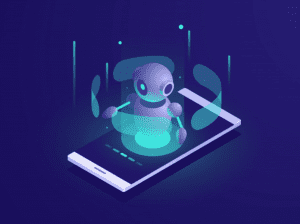From internet platforms to autonomous robots, all sorts of technologies are deployed to keep life move forward as normally as possible in the midst of this worldwide crisis.
Covid-19 has forced all of us to rethink our way of working. In the transformation, technology plays a very important part. For the first time, we have witnessed non-essential businesses close their doors, borders in cities, municipalities, and countries close their borders.
Yet, although the disruption is definitely difficult on most organizations, it would be how companies use tech that would spell a difference between surviving, or even to grow in this uncertain and difficult time.
Software development services have altered as well. From using drones in delivering medical supplies, to the use of AI or artificial intelligence to determine people who are infected, the role of technology and how software has changed drastically over the past two months, and is likely to continue changing as people turn to technology to find solutions.
Changing how People Work
Organizations worldwide are being forced to embrace the remote work reality. In the past, there are many reasons why some offices avoided this kind of work before. Some managers, for instance are wary of remote work preventing workers from staying motivated and productive.
Today, however, companies finally are investing in technology to make remote work possible as majority of workers are forced to stay at home. Although the shift originally was predicted to occur during the next five to ten years, the coronavirus forced it to happen faster than expected.
Software Tech Fighting against Covid-19
Coronavirus now is present in over 100 countries, and the number continues to escalate. Combating this pandemic depends on a robust tech software, particularly artificial intelligence and data science. In today’s scenario, a software development company builds software and solutions that keep track and fight the virus.
At the same time, technology giants have boosted their health initiatives. Technology startups have started to get involved with government agencies, academics, and clinicians to slow down the spread as the virus continues to spread all over the world.
How Software Technology is Used to Manage and Slow Covid-19 Spread
1. Artificial Intelligence for identifying, tracking and forecasting outbreaks. Learning is one of the capabilities of AI. By doing analysis of news reports, government documents, and social media platforms, Artificial Intelligence could detect an outbreak. An example is the BlueDot, a Canadian service startup that keeps tabs of infectious disease risks with AI. It could warn of a threat a few days before public warnings are issued by the World Health Organization.
2. Healthcare claims processing. Due to the rise in patients, clinical and healthcare systems and businesses and admin divisions have been overwhelmed. Technology, such as blockchain platforms could hasten the processing of claims and minimize the face-to-face interaction amount between patients and hospital staff, a critical aspect to prevent virus transference.
3. AI could diagnose the virus. It’s not surprising that imaging departments are under pressure because of the increased workload caused by Covid-19. Alibaba, in response created a diagnosis system that’s AI-powered, which they claim is 96 percent accurate in diagnosing the virus within seconds.

4. Food, supplies and sterilization delivery by robots. Robots are being deployed to accomplish tasks including delivery of food and medicine, sterilizing, and cleaning to minimize human-to-human interaction. Moreover, the robots need not be built for particular environments.
5. Develop medicines. The DeepMind unit by Google published data files of some protein structures that could be implicated in the virus and help in developing a treatment. Artificial Intelligence systems could be used as well in building drugs that could treat the virus with predictive capabilities in proposing existing drugs that could be useful.
6. Chatbots share information. Chatbots have become a necessity as anxiety over the virus grows. They serve as communication tools in the travel and tourism industry to keep travelers updated on the current processes and disruptions.
7. Medical supplies drone delivery. These days, one of the quickest and safest methods to get medical supplies is via drone delivery. Transporting medical samples and quarantine material are now done using unmanned aerial vehicles.
Moreover, drones could also be used in thermal imaging, for patrolling public spaces and track quarantine/curfew non-compliance.
Wrapping Up
From internet platforms to autonomous robots, all sorts of technologies are deployed to keep life move forward as normally as possible in the midst of this worldwide crisis.
While coronavirus is definitely showing us an unprecedented way to work in today’s age, it’s possible for these technologies to stick around, ultimately altering how we count on technology in the future.


Join the conversation!